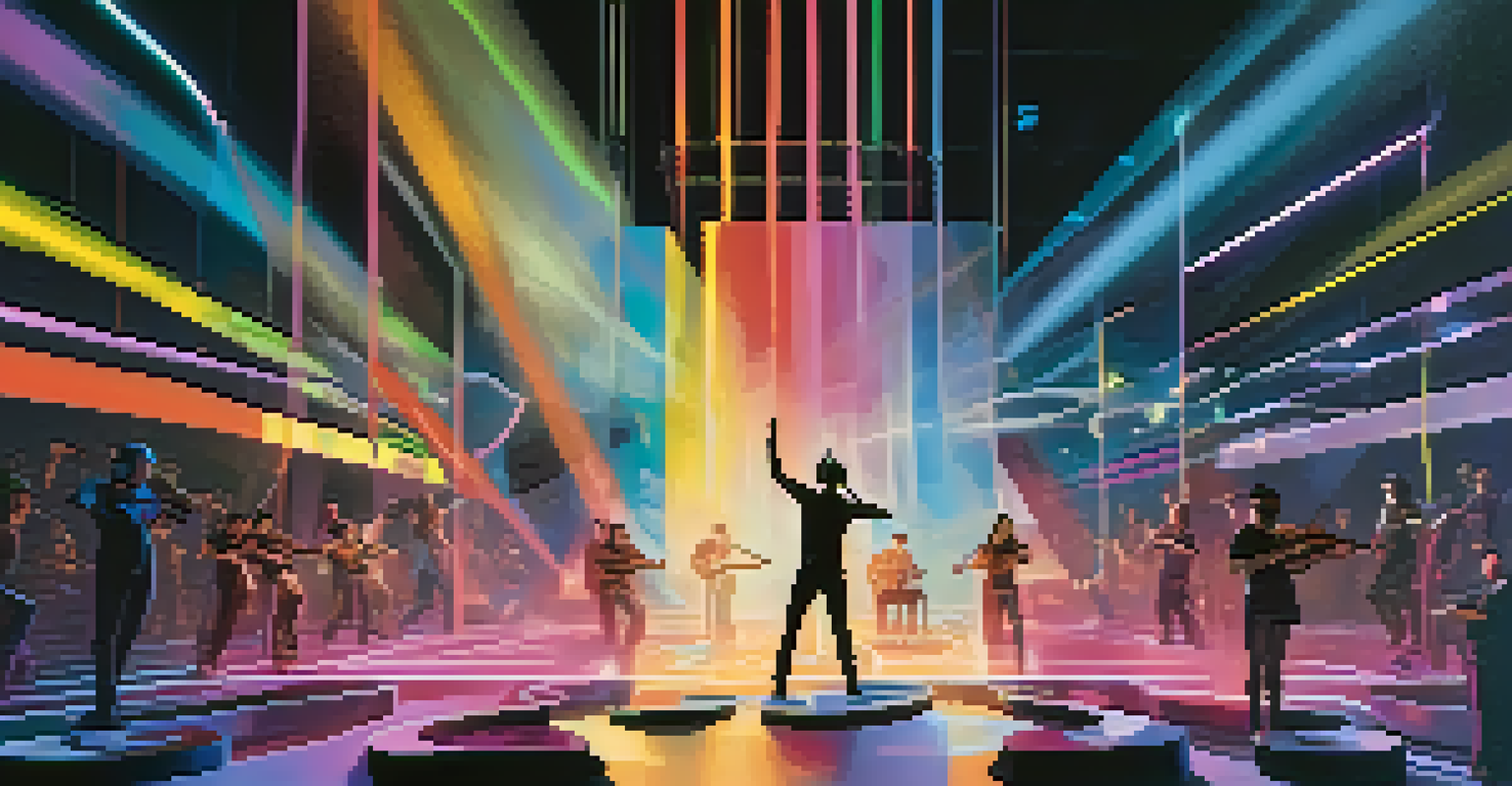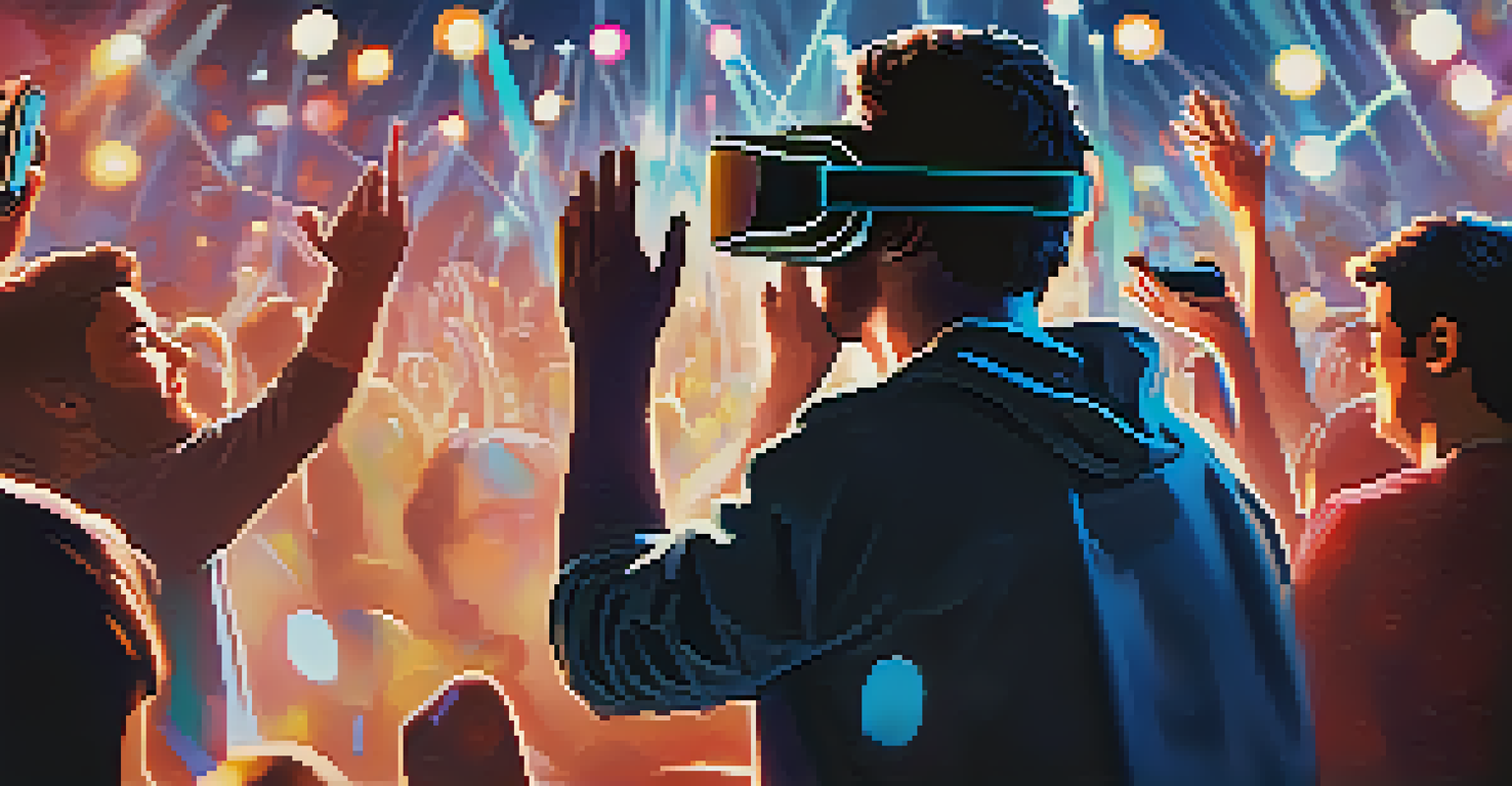The Technical Challenges of Hosting VR Music Events

Understanding Virtual Reality in Music Events
Virtual reality (VR) has transformed how we experience music events, allowing fans to engage in immersive environments from anywhere in the world. With VR, attendees can feel as though they are part of a live concert, interacting with artists and other fans in real-time. This technology opens up new possibilities for creativity but also presents unique challenges that must be addressed for successful implementation.
Virtual reality is the first step in a grand adventure into the landscape of the imagination.
One of the most exciting aspects of VR music events is the ability to create visually stunning environments that enhance the musical experience. However, these complex virtual worlds require robust technical support to ensure smooth navigation and user engagement. Without proper planning and execution, the experience can quickly turn from exhilarating to frustrating for users.
In essence, while VR offers an innovative platform for music events, it comes with a steep learning curve for organizers who must understand the technology's intricacies. From rendering graphics to ensuring low latency, each element plays a crucial role in delivering an unforgettable experience.
Bandwidth and Connectivity: The Backbone of VR Events
Hosting a virtual reality music event demands significant bandwidth and reliable internet connectivity. Unlike traditional streaming, VR experiences require higher data transfer rates to deliver seamless visuals and audio. If the network is slow or unstable, users may experience lag, which can ruin the immersive experience that VR promises.

Moreover, organizers need to consider the diverse range of internet connections that attendees may have. While some may enjoy lightning-fast fiber-optic speeds, others may be limited to slower DSL connections. This disparity can lead to varying experiences for users, making it essential to optimize content for different bandwidths.
VR Enhances Music Event Experience
Virtual reality transforms music events by immersing fans in interactive environments, allowing real-time engagement with artists and fellow attendees.
To mitigate these challenges, event planners can employ adaptive streaming technologies that adjust the quality of the stream based on the user's connection. This ensures that all participants have a satisfactory experience, regardless of their internet capabilities.
The Importance of Hardware Compatibility
Another technical hurdle in VR music events is hardware compatibility. Not all attendees will have access to the same VR headsets or devices, which can lead to fragmentation in the audience experience. Organizers must consider how to create an event that works across multiple platforms while maintaining high-quality visuals and sound.
Technology is best when it brings people together.
Additionally, the varying capabilities of different VR systems can affect user experience. For instance, some headsets have advanced tracking and audio features, while others may lack the same level of sophistication. This inconsistency can create a challenge for developers who strive to provide a cohesive experience for all participants.
To address this issue, event planners should aim for inclusivity by designing experiences that cater to a range of devices. By focusing on cross-platform functionality, they can ensure that more users can join and enjoy the event, regardless of their hardware.
Latency: The Silent Killer of VR Experiences
Latency, or the delay between user actions and system responses, is a critical factor in the VR experience. In music events, even a slight delay can disrupt the synchronization between audio and visual elements, making the experience less enjoyable for attendees. Minimizing latency is crucial for keeping users engaged and immersed in the event.
The sources of latency can vary, from network issues to the processing power of the user's device. Event organizers must identify potential bottlenecks and implement solutions to optimize performance. This may include using high-performance servers or selecting platforms known for their low latency capabilities.
Connectivity is Key for VR Success
Reliable bandwidth and internet connectivity are essential for hosting seamless VR music events, as any lag can disrupt the immersive experience.
By addressing latency concerns early in the planning process, organizers can enhance the overall quality of the VR event. A smooth and responsive experience will keep attendees captivated and encourage them to return for future events.
Creating a Safe and Secure Virtual Environment
As with any online event, security is paramount in VR music events. Organizers must ensure that user data is protected and that the environment is safe from potential threats. This includes preventing unauthorized access and creating a secure platform for financial transactions, should ticket sales or merchandise be involved.
Moreover, promoting a positive and respectful atmosphere is essential for user engagement. This means implementing moderation tools and guidelines to prevent harassment or inappropriate behavior during the event. By fostering a safe environment, organizers can help attendees feel more comfortable and engaged.
Ultimately, a secure and welcoming virtual environment not only protects users but also enhances their overall experience. Attendees are more likely to return for future events if they feel respected and valued.
User Experience: Designing for Engagement
User experience (UX) design is crucial for the success of VR music events. Organizers should focus on creating intuitive interfaces that allow users to navigate easily through the virtual environment. Complicated controls or confusing layouts can frustrate participants and detract from their enjoyment of the event.
Engagement features, such as interactive elements and social sharing options, can enhance the user experience significantly. For instance, allowing users to communicate with one another or participate in virtual activities can create a sense of community that mirrors a live concert atmosphere. This social aspect is vital for retaining attendees' interest.
Post-Event Analysis Drives Improvement
Conducting thorough post-event analysis helps organizers identify strengths and weaknesses, enabling continuous enhancements for future VR music events.
By prioritizing user experience in the design process, organizers can create an engaging and interactive environment that keeps attendees coming back for more. A well-designed VR event can leave a lasting impression and set a standard for future events.
Post-Event Analysis: Learning and Improving
After hosting a VR music event, it is essential to conduct a thorough analysis to identify strengths and weaknesses. Gathering feedback from attendees can provide valuable insights into what worked well and areas that may need improvement. This feedback loop is crucial for continuously enhancing the quality of future events.
Additionally, analyzing technical metrics, such as bandwidth usage and latency reports, can help organizers understand the performance of the event. Identifying patterns or recurring issues can aid in troubleshooting and refining the technical setup for next time. This proactive approach will make future events smoother and more enjoyable.

By prioritizing post-event analysis, organizers can create a cycle of improvement that leads to increasingly successful VR music events. Learning from each experience allows them to adapt and innovate, ultimately elevating the virtual concert experience for all users.